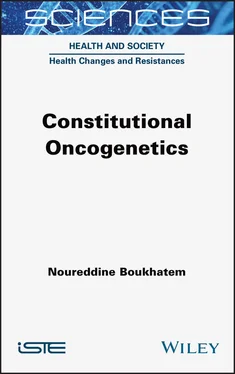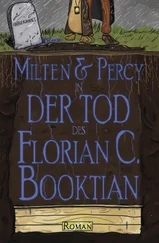RAD51C is a member of the RAD51 family and is an essential component of homologous recombination. It is localized on chromosome 17q23 and codes for strand transfer proteins.
RAD51D is another of the RAD51 paralogues and also codes for proteins involved in homologous recombinant repair of DNA damage.
1.6. Genotype–phenotype correlations
Some genotype–phenotype correlations have been identified in families carrying BRCA2 pathogenic variants.
In studies totaling 189 families with pathogenic variants of BRCA2, an ovarian cancer cluster region was identified in exon 11 between nucleotides 3035 and 6629.
Pathogenic variants in the ovarian cancer cluster region were associated with an increased risk of ovarian cancer and a decreased risk of breast cancer compared to families with variants on either side of this region.
In addition, a study confirmed by other studies involving 356 families with truncated protein pathogenic variants of BRCA1 showed that the risk of breast cancer was lower with variants from the central region (nucleotides 2401–4190). The risk of ovarian cancer was significantly reduced with variants in the 3’ end region of the gene at nucleotide 4191.
Higher rates of ovarian cancer have been found in BRCA1:185delAG carriers at the 5’ end of BRCA1 compared to BRCA1:5382insC carriers at the 3’ end of the gene.
The risk of breast cancer, particularly bilateral breast cancer, and the occurrence of breast and ovarian cancer in the same individual appear to be higher in carriers of the pathogenic variant BRCA1:5382insC than in carriers of BRCA1:185delAG and BRCA2:6174delT. The risk of ovarian cancer is significantly higher in BRCA1 pathogenic variant carriers, and is rare before age 45 in BRCA2:6174delT carriers.
DEFINITION.– Penetrance refers to the likelihood that a clinical condition will occur when a particular genotype is present. A condition is said to have incomplete penetrance when some individuals carrying the pathogenic variant express the associated trait while others do not. It is expressed as the percentage of cases that express the associated phenotype among all carriers of the pathogenic variant .

Figure 1.3. Incomplete penetrance. Individual II3 is an obligatory carrier of the genetic anomaly (their father is sick, they have a sick sister and son as well), but they express a normal phenotype
Carriers of deleterious BRCA1/2 mutations have a cumulative breast cancer risk of 50–85% and an ovarian cancer risk of 15–60% at age 70.
The increased risk of contralateral breast cancer (CBC) in carriers of pathogenic BRCA1 and BRCA2 variants has been confirmed in several large studies. Estimates of the 10-year cumulative risk of CBC in BRCA1/2 carriers range from 18% to 34% for BRCA1 pathogenic variants and 11% to 29% for BRCA2 pathogenic variants.
It is also estimated that the risk of bilateral breast cancer at age 60 is as high as 64% in carriers of BRCA1 mutations diagnosed with breast cancer.
CBC risk was also inversely correlated with age in some studies, with the highest risks observed in women whose first case of breast cancer occurred before the age of 40.
The risk of ovarian cancer is estimated to be 39% for carriers of pathogenic BRCA1 variants and 11–17% for carriers of pathogenic BRCA2 variants.
PALB2 mutations have been shown to confer an absolute breast cancer risk of 33–58% at age 70.
Mutations leading to the production of truncated CHEK2 proteins have been associated with a clinically significant risk of breast cancer in mutation carriers without an affected first- or second-degree relative (20%), and this risk may be as high as 44% in mutation carriers with an affected first- or second-degree relative.
The CHEK2 mutation associated with a family history of breast cancer results in a 28–37% lifetime risk of breast carcinoma, but does not increase the risk of ovarian cancer.
Inactivating variants of BRIP1 are associated with an increased risk of breast cancer. The monoallelic mutations in BRIP1 confer a relative risk of 2.0 for the development of breast cancer. However, there is incomplete segregation of the pathogenic variants BRIP1 and CHEK2 with breast cancer.
Although the data for RAD51C are conflicting, among these data there is substantial evidence of a modest association between germline variants of RAD51C and breast and ovarian cancers.
Note.– The genes widely recognized as conferring a risk of breast or ovarian cancer are distributed as follows:
– breast cancer: BRCA1, BRCA2, PALB2, PTEN, STK11, TP53;
– ovarian cancer: BRCA1, BRCA2, MLH1, MSH2, MSH6, PMS2, RAD51C, RAD51D.
For breast cancer:
– it has been agreed that ATM and CHEK2 confer a moderately increased risk of breast cancer, but concerns about the interpretation of the results of these genes led to a recommendation that only truncated variants be reported, in addition to ATM c.7217T > G (p. Val2424Gly ), which is recognized as conferring an increased risk of breast cancer;
– CDH1 has also been shown to confer a risk of breast cancer, but only in the specific case of lobular breast cancer;
– insufficient evidence has been found for a significant risk of breast cancer associated with NBN, BRIP1 or BARD1.
For ovarian cancer, it has been accepted that BRIP1 confers a sufficient risk of ovarian cancer, so a prophylactic bilateral adnexectomy should be considered.
1.8. Mode of transmission
These predispositions are usually inherited in an autosomal dominant mode and are often characterized by early onset of disease.
1.9. Risks to family members: special consideration
Inheriting BRCA2 or PALB2 mutations from both parents causes specific types of Fanconi anemia. This rare condition is characterized by progressive bone marrow dysfunction, growth delay, variable congenital malformations, a high risk of leukemia and early solid tumors.
A woman and man with a confirmed BRCA2 or PALB2 mutation may therefore consider preconception genetic counseling to clarify the risks their partner has of also carrying a mutation in the same gene.
Current guidelines emphasize the importance of recognizing pancreatic cancer and the risk of prostate cancer associated with BRCA1/2 mutations. The risk of developing pancreatic cancer has been shown to be two to three times higher in patients with BRCA1 mutations and two to seven times higher in patients with BRCA2 mutations, respectively.
The surveillance recommendations for carriers of deleterious BRCA1/2 mutations according to the NCCN are as follows.
There should be a breast awareness program 9from the age of 18. Clinical examination of the breasts should take place every 6–12 months 10from the age of 25 years and should include:
– breast monitoring 11:- 25–29 years of age: annual breast cancer screening with contrast MRI 12, 13(or mammography with consideration of tomosynthesis, only if MRI is not available) or individualized screening based on family history if breast cancer is diagnosed before the age of 30,- between 30 and 75 years of age: annual mammography taking into account tomosynthesis and breast MRI screening with contrast,- over 75 years of age: monitoring should be considered on an individual basis,- for women with a BRCA1/2 mutation who are being treated for breast cancer and have not undergone bilateral mastectomy, screening by annual mammography and breast MRI should continue as described above;
Читать дальше













